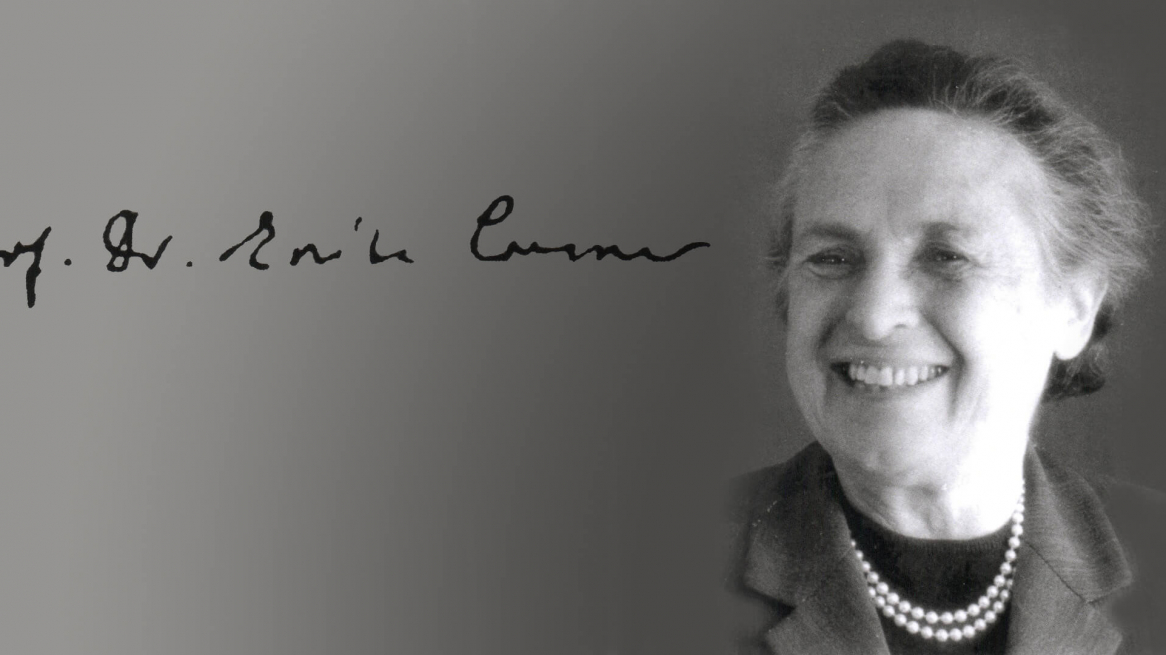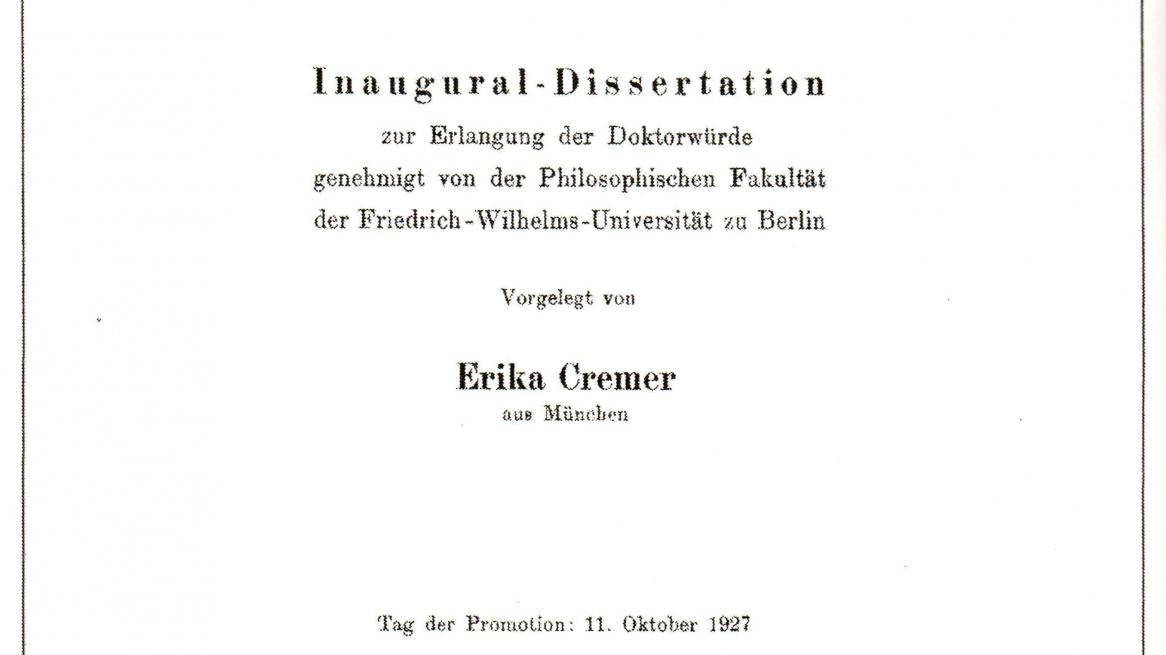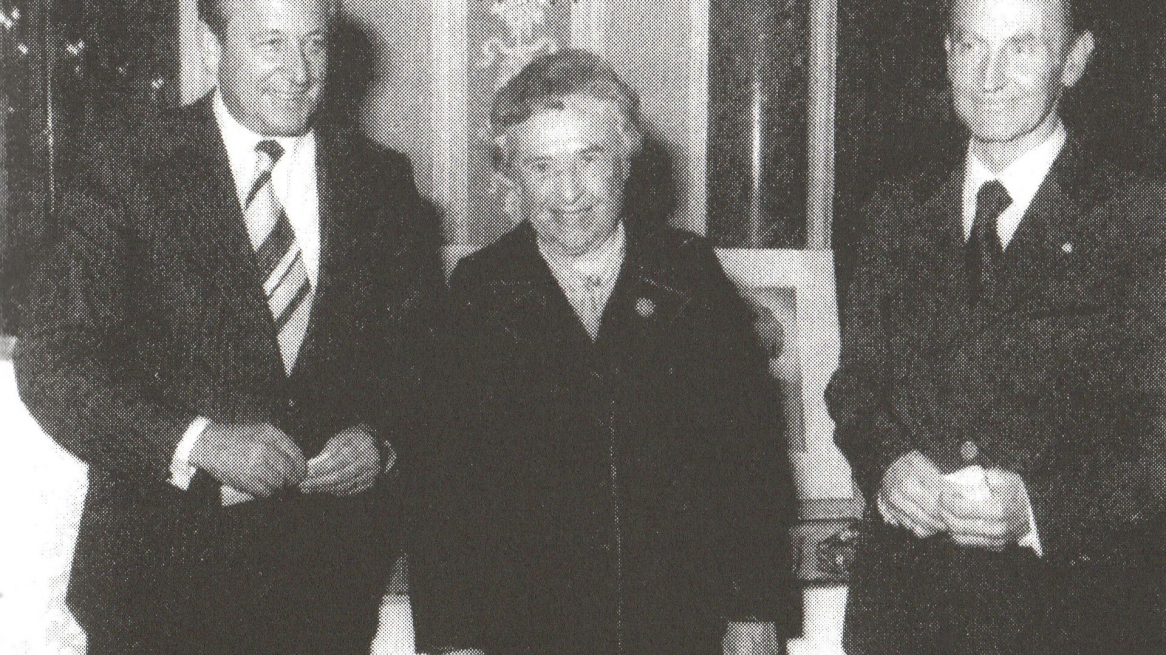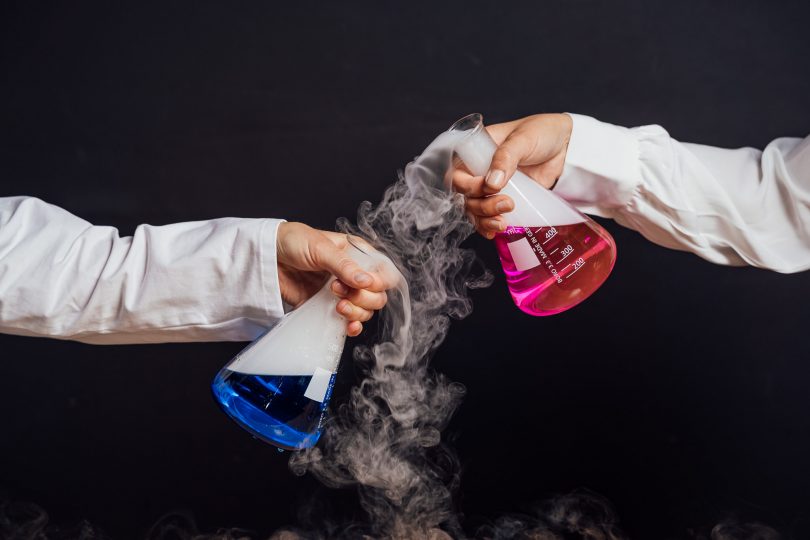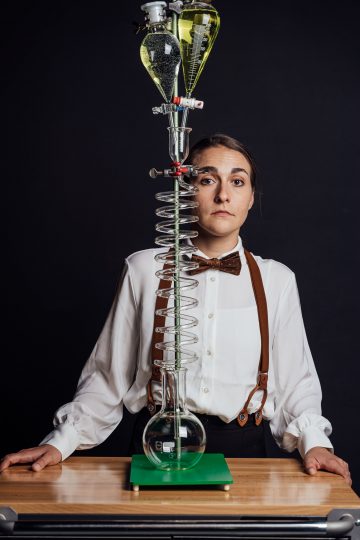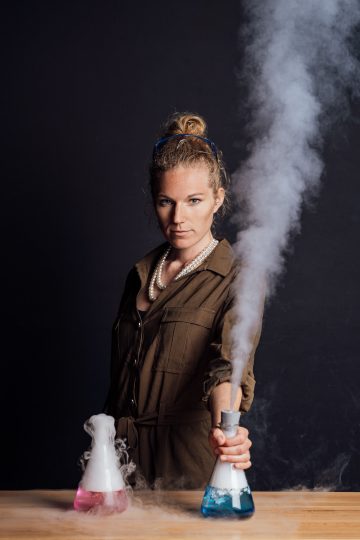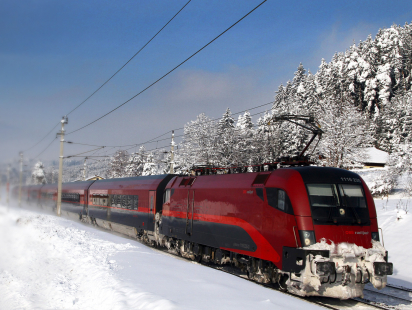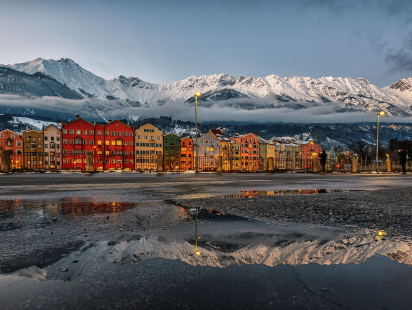The physical chemist Erika Cremer (1900-1996) is one of the most important research personalities of the University of Innsbruck. Since the world of science was and still is a male domain in many fields, her life story seems all the more remarkable. Her legacy has inspired not least a current play, which was shown in the fall of 2021.
Coincidences are an interesting thing. For example, it is a special coincidence when, after a corona-related, longer cultural break, one finally returns to one's personal local favorite theater in the fall of 2021, namely the ArchTheater in Innsbruck, and is really blown away by the play shown there.
The production of "Erika and the second wave" impressed me not only with great acting, but with powerful dance and fascinating live chemical experiments on stage. In addition, I learned the true story of the scientist Erika Cremer, who impressed me - to say the least. An Innsbruck-related story that finally gave me the idea for this blog article.
I read the book "Erika Cremer - A Life for Chemistry" by Gerhard Oberkofler and learned some interesting things. Above all, however, I did not understand many things while reading, because I am not a natural scientist. I will try here to describe Erika Cremer's life as well as I can and why it impressed me so much. I quote her achievements in research from the book mentioned. But all in order ..
SCIENCE IN THE CRADLE
Erika Cremer was born in Munich in 1900 and grew up in Cologne and Berlin. As the daughter of physiology professor Max Cremer, the academic path was mapped out for her and her brothers, but especially for Erika as a woman, it was anything but natural. While she quickly discovered her great enthusiasm for chemistry, her brothers Hubert and Lothar embarked on technical careers as mathematicians and acousticians. Erika Cremer's family background from the educated middle class made her career possible in the first place and gave her a certain financial security so that she could later take on unpaid assistant positions. Moreover, this background allowed her to lead an apolitical life at a time marked by political upheaval.
Erika Cremer's doctoral thesis, 1927, Berlin (scan: "Erika Cremer - A Life for Chemistry," Gerhard Oberkofler, p. 28)
CHLORINE OXYHYDROGEN AND FIRST SUCCESSES
in 1921, she enrolled at the University of Berlin for chemistry, physics and mathematics with a very good school-leaving certificate. There she studied under several renowned scientists, among others. In 1927, Erika Cremer received her doctorate with her dissertation "On the reaction between chlorine, hydrogen and oxygen in light". Thanks to her excellent thesis, she was accepted as a collaborator at various universities and subsequently worked with several Nobel Prize winners, including Georg Karl von Hevesy and Otto Hahn.
The political situation in Germany in the 1930s was more than tense, and of course the universities felt this too. And Erika Cremer, as a woman, felt this especially, so her positions were often cut before those of the men, or her collaborations with colleagues persecuted by the Nazis were terminated. Nevertheless, she published diligently on her research - a total of over incredible 200 publications until the end of her career.
INNSBRUCK - PROFESSIONAL AND PRIVATE HOME
in 1939, Erika Cremer habilitated at the Friedrich Wilhelm University in Berlin. in 1940 she came to the University of Innsbruck, and in the same year she received her teaching license. At that time, the subject of physical chemistry was still being established in Innsbruck. Cremer played a major role here and left her mark on the Institute of Chemistry for many years.
THE GAS CHROMATOGRAPHY
Erika Cremer developed the basic principles of gas chromatography, but the intended publication of her first study was lost in the turmoil of war in 1944. Cremer's study thus did not appear until 1951.
"The collective term chromatography refers to an analytical and preparative method for separating mixtures of substances by fractional partitioning between a solid and a mobile phase. Gas chromatography is the special method of separating gaseous substances by introduction into a carrier gas stream passed over a solid (liquid) adsorbent and their detection by quantitative registration of the components after breakthrough (for example, by thermal conductivity measurement)." *
Gas chromatography is an important technique in the agricultural, pharmaceutical, cosmetic, food and petroleum industries, doping control, medical testing, environmental analysis, research and some other fields. For its discovery and development, Erika Cremer must be considered a significant pioneer.
Narrowly missing the Nobel Prize
Despite her pioneering work, she was unfortunately overlooked - or passed over? By not being published during wartime, her research did not become internationally known. Language barriers may have been an aggravating factor, as Cremer initially published only in German. In addition, as a woman, she was certainly disadvantaged compared to male colleagues. Without these hurdles, faster results would have been possible, which would have made wider circles.
When the British Archer J. P. Martin and Richard L. M. Synge were awarded the Nobel Prize for Chemistry in 1952 for their discovery of distribution chromatography, they probably knew nothing of Erika Cremer's research. The Nobel Committee probably felt the same way and so the German physical chemist was not considered for the Nobel Prize, but actually overlooked.
Fritz Prior, Erika Cremer and Ernst Brandl around 1977 (from left to right, scan: "Erika Cremer - A Life for Chemistry," Gerhard Oberkofler, p. 75)
A life for science
At the age of 59 (1959), Erika Cremer was appointed full professor of physical chemistry, the first (female) "Ordinaria", at the University of Innsbruck university of Innsbruck. Compared to the careers of her male colleagues, it took a very long time in each case for her to rise in the university ranks.
In addition to her work in Innsbruck, she participated in numerous international congresses and always exchanged letters with colleagues. She also took part in several research stays in the USA.
In 1996 Erika Cremer finally died in Innsbruck at the ripe old age of 96.
In memory of the great female researcher, the Leopold Franzens University Innsbruck since 2009 the Erika Cremer Habilitation Program to promote women's scientific careers.
ERICA AND THE SECOND WAVE
The play "Erika and the second wave" was conceived, elaborated and executed by Bogen-Szenario(Theater Szenario in cooperation with BogenTheater Innsbruck). It was performed in the fall of 2021 at the BogenTheater Innsbruck, at the Winklbühne in Prutz/Faggen, at the Stromboli Cultural Laboratory and in the Theater im Sudhaus in Hall in Tirol, in the Kurzentrum Vivea in Umhausen as well as in the auditorium in the main building of the University of Innsbruck (benefit performance).
The Bogen-Szenario is a trio consisting of Wolfgang Viertl-Strasser (director and technician), who holds a doctorate in chemistry, and the two cultural scientists Eva Maria Kirschner (acting and dance) and Martina Strasser (dance). I was allowed to ask my curious questions to the team of three and thank them very much for their kind help and for the photos. My special thanks go to Wolfgang for additional professional explanations and assessments, which I reproduce here among other things.
A BIOGRAPHICAL THEATER OF A SPECIAL KIND
Among the many special aspects of this play, perhaps the greatest sensation is the fact that the Bogen scenario was "Erika and the Second Wave has written (!) and realized itself. Many original quotes by Erika Cremer also flow into the text. Eva Maria Kirschner slips into the role of the main character. She succeeded in a remarkable way to captivate the whole audience alone (!) on stage.
Strong stage presence: Eva Maria Kirschner and Martina Strasser (from left to right, © Mathias Brabetz Photography)
REFINED WITH LIVE CHEMICAL EXPERIMENTS
A unique highlight were of course the chemical experiments on stage. Liquids changed color after vigorous shaking, it smoked and even glowed in the dark. The wow effect was huge! Extremely impressive.
As an audience member, I could have bet that the actress was a trained chemist, so convincing was the extensive text with scientific terms and the explanation and execution of the live experiments. By the way, I was not alone in this assumption. For example, the team reported that at every performance, people asked whether Eva Maria was a chemist - even "real" chemists asked this question. It was only later that I learned that Eva Maria does something completely different professionally. All the more impressive is her strong acting performance.
In any case, preparing for this play was a special challenge and involved many chemistry tutoring sessions with the director. First understanding the experiments and then repeating the text were important. Besides being very challenging, the play was (quote) "a great experiencefor Eva Maria. "
Dancer Martina Strasser (© Mathias Brabetz Photography)
Actress Eva Maria Kirschner (© Mathias Brabetz Photography)
REFINED WITH REFINED DANCE
Technically, the production was also powerful, with recorded speech and expressive dance choreography showing above all the numerous conflicts with male superiors and colleagues that Erika had to endure. What was particularly interesting about the dance interludes with Martina Strasser was that a woman portrayed these male characters.
Martina, a cultural scientist and dance pedagogue, gave the play a very special touch with her choreographies. The dance dialogues achieved a great aesthetic and dramaturgical effect. The final dance was extremely strong and unforgettable for me. For director Wolfgang, the final dance makes up "the heart and soul of the piece."
WAVES - THEN AND NOW
Due to the title "... and the second wave" one naturally first thought of corona waves in pandemic times. In fact, it was open for a long time in the play whether the "times of crisis" meant the current situation or another time in the past. Only quite late did it become clear that the "second wave" referred to the Second World War. - This also vividly demonstrates how current the challenges are for women in a wide variety of fields, here in science.
The play offers countless facets - from the historical reappraisal, to the surprising topicality of the emancipatory themes, to the enchanting experiments and the rousing dance interludes. The Bogen Scenario succeeded so wonderfully in bridging a wide variety of disciplines with the play and telling an entertaining, entertaining story that captivated the audience.
Rarely have I experienced such a passionate, interesting and exciting play. Thank you for that!
CLOSING SENTENCE
The Arc Scenario has received numerous requests for further performances, including from me. Especially schools and the Faculty of Chemistry and Pharmacy of the University of Innsbruck would be interested. So these inquiries and a possible resumption are on the table. A decision on this will be made in the course of the coming year and will also depend on the pandemic situation. Theater lovers like me are waiting full of anticipation for "Erika" as well as for new plays.
Cover picture at the top: Scan: "Erika Cremer - Ein Leben für die Chemie", Gerhard Oberkofler, cover
Many thanks to the sheet scenario Eva Maria, Martina and Wolfgang for their kind cooperation.
Many thanks also to Mathias Brabetz Photography for the pictures for "Erika and the second wave".
SOURCES
Erika Cremer - A Life for Chemistry, Gerhard Oberkofler, Studien-Verlag Innsbruck-Wien, 1998
*) quoted from "Erika Cremer - A Life for Chemistry", Gerhard Oberkofler, Studien-Verlag Innsbruck-Wien, 1998, p. 36-37
https://de.wikipedia.org/wiki/Erika_Cremer
Rate this article
Show me the location on the map
A Tyrolean girl, graphic designer, blogger and tour guide with a variety of interests and a weakness for nice people, culture, starry night skies, one more beer and the mountains.
Similar articles
The zoo is at the cradle of my love for Tyrol. It awakened in me the longing…
I commute a lot between Innsbruck and Vienna and I know the advantages of both cities. Many…
The darker and colder it gets outside, the cozier and cozier it gets inside. When, if not…
Innsbruck's city centre offers unique photo motifs, whether with a smartphone or a professional camera. The following…

